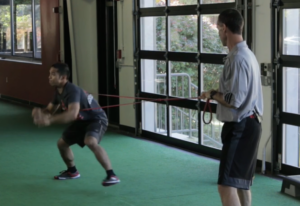
Random Thoughts on Sports Performance Training – Installment 15
This is my first installment of this series since October, so hopefully I can atone for that with a solid January performance. Here goes!
1. On several occasions, I’ve written that if you are going to include an exercise in a program, you absolutely have to be able to justify how it’s going to create the training effect you want. In particularly, this is a question that should be asked constantly during sprinting and agility progressions. The end goal is obviously to (safely) put a lot of force into the ground as quickly as possible to create powerful athletic movements in all three planes of motion. Sometimes, I feel like we get very caught up in just programming drills for the sake of programming drills. There are a million different types of skipping drills, for instance, and we use a lot of them. Athletes certainly ought to be able to skip, but at the end of the day, we have to ask ourselves if making a skip more advanced and elaborate is really going to make an athlete move better. Or, would we be better off devoting that training volume to actual sprint work? There isn’t really a “correct” answer to these questions, but I do think it’s important to critically analyze our programs to see if the carryover from drills to actual athletic performance is really that good.
2. Earlier today, I was discussing outfield “jumps” with a few of our Cressey Sports Performance clients, including Sam Fuld, an Oakland A’s outfielder who is well known for making some pretty crazy plays in center field. We were talking about lower-body movement (hip turn, crossover run, etc.) during the initial break as he reads a ball off a bat, but as we went to actually find some video online, my attention went elsewhere. Check out this play where Sam traveled 58 feet to make a diving catch:
What I noticed was the fact that he never actually got upright. He stayed in acceleration mode the entire time. If you replay the video from above, watch the :08 through :11 second interval. You’ll rarely see a player cover more ground in the field.
This is yet another reason why I think a 30-yd (or home-to-first) time is more appropriate for assessing baseball-specific speed than a 60-time. Baseball players rarely get to top speed, whether it’s in running the bases or playing the field. And, more importantly, they’d never do it in a straight line. I’m beginning to think that a 60-time is about as useful for a baseball evaluation as the 225lb bench press test is for NFL players…
3. Remember that not all your anterior core work has to be slower tempo drills like rollouts and fallouts, or low-level isometrics like prone bridges. Rather, remember that any time you go overhead while maintaining a neutral spine, you’re working to resist excessive extension at your lumbar spine. In other words, overhead med ball drills can be great anterior core progressions – and here’s a way to take them to the next level:
4. Resistance bands are awesome on a number of training fronts. They can be used to accommodate the strength curve, making the movements more challenging at the points in the range of motion where we are strongest. They can also be used to deload certain movements at positions where we are weakest.
In sports performance training, though, I’d say that their biggest value is in teaching direction – and subsequently loading it. As an example, I like band-resisted broad jumps because they allow us to produce force in a path that would be challenging to load in any other way. And, we need to produce force in this path during everyday athletic endeavors:
This is an area where Lee Taft really excels. When I watch experienced coaches teaching and coaching, I look for patterns that stand out: strategies that they return to frequently. In his new Certified Speed and Agility Coach course, Lee uses a band a ton to teach direction of force application and create appropriate angles for acceleration. It made me realize that we can get more efficient in some of our coaching strategies by busting out the band a bit more.
Speaking of Lee, the early-bird $100 discount on his new certification wraps up this Friday at midnight. I’m finishing it up myself and really benefited on a number of fronts – and our entire Cressey Sports Performance staff will be going through the resource as well. You can learn more about the course HERE.



